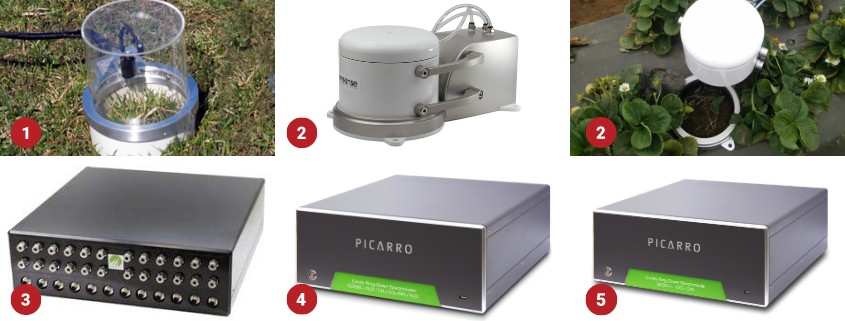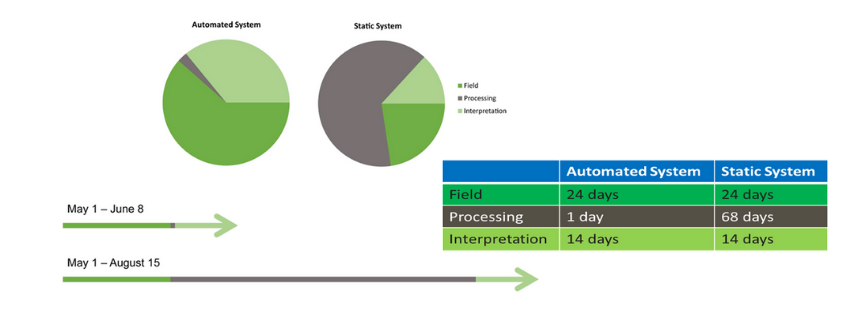Meeting the challenge of climate change with soil flux analysis
For growers, agri-chemical companies, producers and food retailers monitoring and measuring positive and negative soil flux can help balance greater productivity, sustainability and improved soil health. What is soil flux analysis and what impact does it have on climate change?
Driving net zero reduction
Global Green House Gas emissions are a sensitive topic politically with international agreements of targets and the drive to a net zero status, but there is a debate going on also about who is the most culpable.

Carbon Dioxide (CO2) is by far the highest proportion of GHG emissions at around 75%, but Methane (CH4) and Nitrogen Oxide (N2O), although less in proportion, are respectively 28 times and 310 times more potent than CO2. Most of these emissions come from the burning of fossil fuels for energy production, transportation, manufacturing and building but land use also plays a significant part.
In 1973, the National Soil Inventory (England and Wales) was set to obtain an unbiased estimate of soils, and their carbon content. Since the original survey, further sampling has shown that in most soil types, there has been a progressive decline in carbon content, and the inference is that other temperate regions would show similar traits.
Losses due to land use activity
Inefficient use of fertilisers results in N2O being last as emissions to the atmosphere, and nitrates being leached through the soil into water courses. By targeting applications more effectively to ensure the crop is only given what it can utilise we are able to reduce these losses. Using variable rate applications, or slow release Urea are examples of how land managers are changing behaviour.
Storage and application of slurry and manure also result in emissions. Covered stores, better timing of applications and use of dribble bars and direct injection of slurry rather than splash plates can all contribute.
Rumination results in emissions of CH4 which give cattle and sheep a particularly bad image. This is more a factor in international production than UK, where many animals graze pasture unsuitable for crop production, and that permanent grassland can also be considered a net carbon sink.
Deforestation for agriculture, although not an issue in the UK, but certainly in other parts of the globe for production of soya and palm oil amongst other commodities has a significant impact. We not only lose the of that forest to act as a carbon sink, but the felled and cleared timber both emits CO2 and subjects the cleared areas to the potential of erosion.
Cultivations result in emissions from varied sources, the tractor exhaust (combatted in recent years by addition of EGR and AdBlu technology). The soil surface, as each cultivation releases naturally occurring gases into the lower atmosphere (minimum tillage and direct drilling have had some impact by reducing the amount of soil disturbance)
Natural ecological processes in the soil sub-surface produce and consume gases, and as the soils warm due to climate change, microbial metabolic rates increase resulting in increased CO2 emissions. Gases diffused from the soil surface into the lower atmosphere is known as positive flux, and gases absorbed into the soil is known as negative flux, the balance between the two will determine whether soils are a net source, or a net sink of GHG.
Soil Flux chambers
To calculate this, we need to collect accurate data on soil respiration rates, which can be done by using soil flux chambers. There are several different manufacturers of soil flux chambers, but they can be separated into two main categories.
- Closed chambers where the gases accumulate in the headspace and are sampled by syringe and stored for laboratory processing and analysis.
- PP Systems CPY-5 Canopy Assimilation Chamber (#1)
- Automated chambers which can provide a timely method of sampling, as when coupled with a multiplexer and an analyser, up to 12 chambers can be linked in series and be deployed over a long period to sample and analyse in the field (subject to a reliable power supply)

All of the above equipment is designed to be used in the laboratory or the field (subject to a satisfactory and reliable electricity supply). The Picarro G2201-i (#5) is particularly useful for academic research applications, as it is more robust and user friendly than typical mass spectrometry methods (McCloskey et al 2020).
Strawberry gas flux measurement research
The time saving that can be achieved by automated chamber equipment deployed in a field experiment is demonstrated by Pamona College, California when monitoring soil flux in a commercial strawberry crop. The time in the field and the interpretation was the same using both systems, but the processing of the data represented a huge time saving for the trial, reducing the days from 68 down to 1.

Soil commercial and research enquiries
For further information on this equipment and the possibilities of incorporating into commercial or research studies with the Soil Flux 360 solution, please contact Duncan Ross, Business Development Manager Crops at Duncan.ross@agri-epicentre.com or fill out our online contact form.




